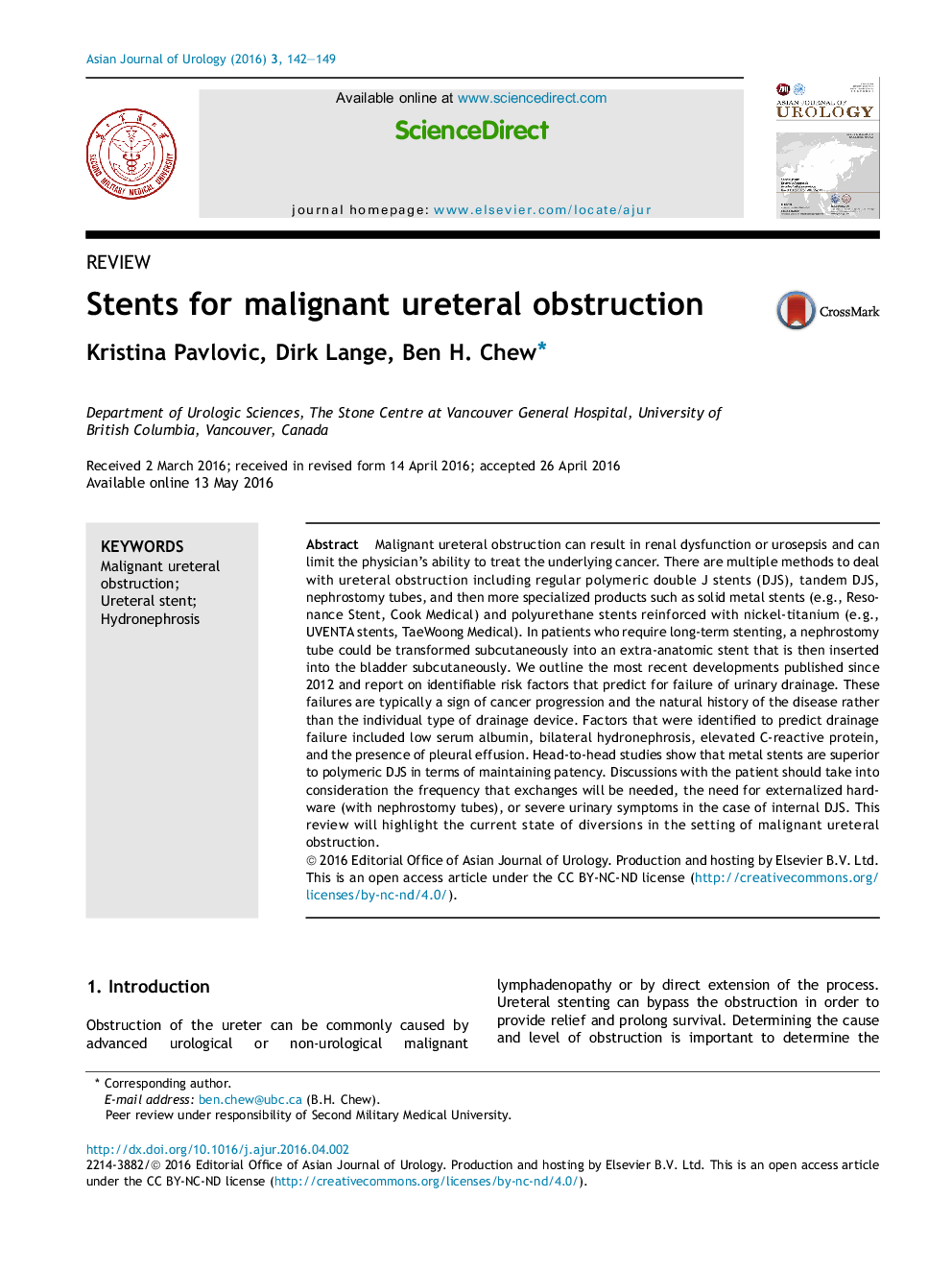| کد مقاله | کد نشریه | سال انتشار | مقاله انگلیسی | نسخه تمام متن |
|---|---|---|---|---|
| 3852819 | 1598526 | 2016 | 8 صفحه PDF | دانلود رایگان |
Malignant ureteral obstruction can result in renal dysfunction or urosepsis and can limit the physician's ability to treat the underlying cancer. There are multiple methods to deal with ureteral obstruction including regular polymeric double J stents (DJS), tandem DJS, nephrostomy tubes, and then more specialized products such as solid metal stents (e.g., Resonance Stent, Cook Medical) and polyurethane stents reinforced with nickel-titanium (e.g., UVENTA stents, TaeWoong Medical). In patients who require long-term stenting, a nephrostomy tube could be transformed subcutaneously into an extra-anatomic stent that is then inserted into the bladder subcutaneously. We outline the most recent developments published since 2012 and report on identifiable risk factors that predict for failure of urinary drainage. These failures are typically a sign of cancer progression and the natural history of the disease rather than the individual type of drainage device. Factors that were identified to predict drainage failure included low serum albumin, bilateral hydronephrosis, elevated C-reactive protein, and the presence of pleural effusion. Head-to-head studies show that metal stents are superior to polymeric DJS in terms of maintaining patency. Discussions with the patient should take into consideration the frequency that exchanges will be needed, the need for externalized hardware (with nephrostomy tubes), or severe urinary symptoms in the case of internal DJS. This review will highlight the current state of diversions in the setting of malignant ureteral obstruction.
Journal: Asian Journal of Urology - Volume 3, Issue 3, July 2016, Pages 142–149
